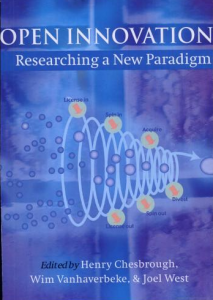INNOVATION INFRASTRUCTURE FOR OPEN INNOVATION
/What's the best support system for open, collaborative innovation? There are sites to help you find collaborators (e.g., Build It with Me) and there are sites focused on collaboration around specific areas of interest (e.g., DIY Drones, Local Motors, & AeroInnovate). Should you add collaboration to community of interest pages or should projects build their own collaboration spaces (perhaps with Google Sites, Huddle, or within the enterprise, Brainstorm)? These are the questions my Managing Technology & Innovation students will be addressing in their Spring term (focusing on Electric Aircraft collaborations). But first, I'm going to spend some posts following my own advice: doing an audit.
First audit question: Who are the participants? Ans: Companies, individuals, and teams.  Henry Chesbrough, David Teece, Eric von Hippel and others have drilled holes in the traditional innovation funnel. "With knowledge now widely distributed, companies cannot rely entirely on their own research, but should acquire inventions or intellectual property from other companies when it advances the business model." Instead of companies having closed R&D processes where ideas are generated and developed within the walls of the company, we now see ideas coming from non-research focused employees, customers & users; collaborations across past competitors; alliances; and acquisitions as being the dynamics of R&D. At the same time, individuals and teams are seeing the value of small batch entrepreneurship, hackerspaces, and the Do It Ourselves (DIO) economy.
Henry Chesbrough, David Teece, Eric von Hippel and others have drilled holes in the traditional innovation funnel. "With knowledge now widely distributed, companies cannot rely entirely on their own research, but should acquire inventions or intellectual property from other companies when it advances the business model." Instead of companies having closed R&D processes where ideas are generated and developed within the walls of the company, we now see ideas coming from non-research focused employees, customers & users; collaborations across past competitors; alliances; and acquisitions as being the dynamics of R&D. At the same time, individuals and teams are seeing the value of small batch entrepreneurship, hackerspaces, and the Do It Ourselves (DIO) economy.
Wired Magazine's Chris Anderson presents this shift as "The Next Industrial Revolution:"
The tools of factory production, from electronics assembly to 3-D printing, are now available to individuals, in batches as small as a single unit. Anybody with an idea and a little expertise can set assembly lines in China into motion with nothing more than some keystrokes on their laptop. A few days later, a prototype will be at their door, and once it all checks out, they can push a few more buttons and be in full production, making hundreds, thousands, or more. They can become a virtual micro-factory, able to design and sell goods without any infrastructure or even inventory; products can be assembled and drop-shipped by contractors who serve hundreds of such customers simultaneously.
In the case of electric aircraft the list of participants is long, and diverse: Enthusiast organizations, foundations, and government agencies (e.g., EAA, NASA, CAFE Foundation, FAA); companies like Boeing and Yuneec; and component firms and inventors (see the preliminary program for Cafe Foundation's 2010 symposium for a flavor).
Next up: What activities does an open innovation infrastructure need to support?
Hint: I'll be building from Gibson & Gibb's discussion around innovation teams. Thanks in advance for comments that suggest sources outlining the activities that companies, individuals, and teams need to be supported by an innovation infrastructure and/or tools that support these activities. Personal favorites or ones to avoid especially appreciated. For some background, check out Open Innovators and their list of platforms.







